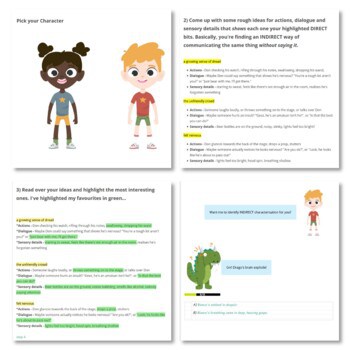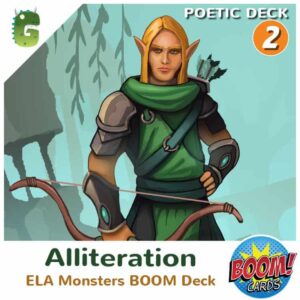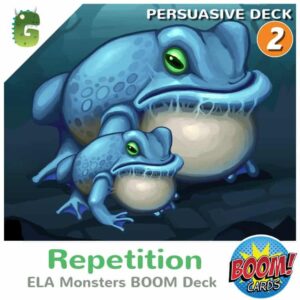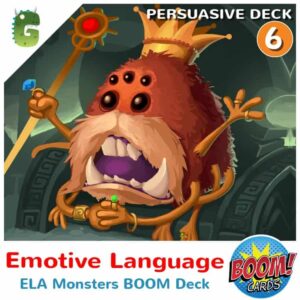Indirect vs Direct Characterization
$3.99 USD
Level up your students’ writing with this fun, no-prep lesson on indirect characterization for grades 5-9. This immersive, game-based activity helps students understand what indirect characterization is, why it’s a better way to write, and how to apply this technique in their own work.
Level up your students’ writing with this fun, no-prep lesson on indirect characterization for grades 5-9.
This immersive, game-based activity helps students understand what indirect characterization is, why it’s a better way to write, and how to apply this technique in their own work.
WHY THIS SKILL MATTERS:
-----------------------------------------------------------
We all know that nothing is more boring than a flat character. We are also painfully aware that like all beginners, students often churn out characters that are all too obvious. The problem is, students don’t understand HOW to make characters more interesting and subtle. Simply telling them to “make characters more 3 dimensional” or “show don’t tell” isn’t enough. They need to understand the patterns of writing that are flat, and how to make them better.
Many students don’t realize there are simple formulas for writing characters that are interesting. They hear that characters should be realistic and believable but struggle to create characters who keep their readers turning the pages. This can be frustrating for students and lead them to believe they simply can’t write good characters.
One simple way to help elevate their writing is through indirect characterization: a technique of adding description, revealing character traits, or sharing thoughts and feelings through actions/dialogue that brings characters to life. Characters created with this technique aren’t always obvious and predictable; instead, they are more subtle, consistent, and complex. The good news is this technique is easy to learn, and once you know what you’re looking for, it’s easy to renovate writing that is too direct.
In this interactive lesson, students will explore the effective use of showing-not-telling in writing, and by the end of this lesson, students will:
· Have a clear understanding of indirect characterization (and why it’s better!)
· Analyse 15-30 sentences for evidence of indirect characterization vs direct characterization
· Transform 5 examples of direct characterization into indirect characterization.
This lesson is browser-based and auto-grading which means it will work on any device and is perfect for distance learning or home school - simply send your students a link and code to get them started straight away.
CCSS Codes: RL.5.1, 5.4, RL.6.1, 6.4, RL.7.1, 7.4, RL.8.1, 8.4, RL.9-10.1, 9-10.4
WHAT YOU GET:
-----------------------------------------------------------
1. An interactive and differentiated tutorial including a definition, examples, and comprehension test (Identifying Indirect Characterization)
2. A gamified quiz (students only progress once they get at least 15 questions correct)
3. Tips for writing characters that are more indirect
4. THREE short writing tasks (students are given DIRECT examples and must transform them to INDIRECT using detail and action/dialogue)
HOW TO USE:
-----------------------------------------------------------
This is the fun part. It’s so easy! Simply:
1. Go to this link: gogamewise.com/games/indirect-characterization
2. Put in your game code (which you'll find in the pdf product file download).
That’s it! Have fun and good luck!
IMPORTANT NOTES:
-----------------------------------------------------------
This lesson is online and needs an internet connection (and a modern browser)
to work. Unfortunately, I can't guarantee it will work properly on old versions of Internet Explorer!









Reviews
There are no reviews yet.